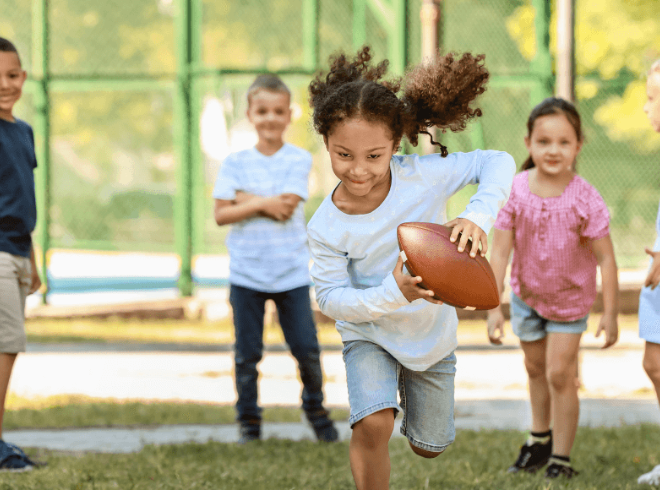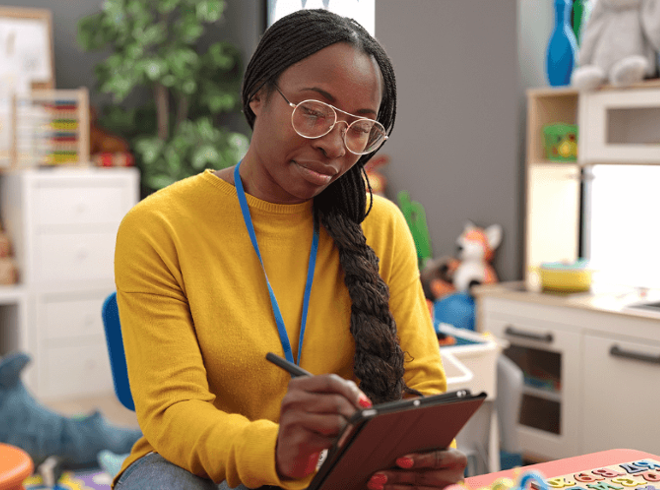Leverage the Power of Your Program with Game-Winning Communication and Event Fundraising
By Arly Communications on September 9, 2022
You’re excited about your programming because you know the impact it has on kids, families, and the community. But how can you engage funders and stakeholders, getting them just as excited about what your program has to offer? The answer lies in a winning combination of communication and in-person events.
Let’s explore how you can leverage the power of your program to enhance your fundraising strategies.
Understand what matters to your stakeholders.
You know what matters to you and why you love your program, but do you know what matters most to your stakeholders? Meaningful partnerships can form when you can find and highlight the overlap between your priorities and theirs.
Do they care deeply about serving historically underserved populations? Let them know how you’re serving those kids and families. Do they want to see reading outcomes improve among elementary schoolers? Show them the results of your language enrichment activities.
Some general areas that are often important to stakeholders include:
- Impact for children
- Parent satisfaction
- Proper use of facilities
- Well-trained staff
- Culture and climate
- Safety protocols
- Learning recovery
- Measurability and responsiveness
- Financial structure/available funding
Once you’ve identified sources of funding and understand what matters to those funders, develop a fundraising strategy to not only secure a grant or donation initially but also to maintain your stakeholders’ passion for your program. You should think long term about your communication strategy.
Make an impact with data and real stories.
To paint a full picture of your program and the impact it has in your community, find data points that show an objective measure of your program’s value. This data is becoming increasingly important to donors and, in turn, becoming more critical for nonprofit fundraising strategies.
For instance, you may share metrics such as:
- Number of days of programming
- Number of children enrolled
- Average daily attendance
- Hours of instruction
- Percentage of educators that recommend your program
- Months gained in a particular subject area
- Percentage or number of educators who enhanced their skills
These data points can be powerful on their own, but what often resonates with stakeholders is the real-life stories that bring faces and names to these numbers. Share testimonials from families and staff members that provide insight into their experiences. These anecdotes can pull at your donors’ heartstrings and help them see the true impact of your program.
Host events that appeal to your stakeholders.
Events can be an excellent way to make meaningful connections with stakeholders while educating them about your program and getting them excited to be involved. If you’re not using events in your donor pipeline, now is the time to embrace this strategy.
There are a few types of events to consider based on the stakeholders you’re appealing to and the goals you’re hoping to achieve.
Open Houses
Open houses are informal and provide a great opportunity for giving a high-level introduction to your program. You can bring in multiple stakeholders, including prospective and lapsed funders, community VIPs, and elected officials, at once and allow them to see firsthand how you’re helping kids in your community.
Small-Group Site Visits
For those who are already engaged with your program, such as current funders and school or community partners, a small-group visit may be a better option. These visits allow for focused conversations based on your visitors’ interests.
One-on-One Visits
When you want to give a stakeholder your undivided attention, a one-on-one visit works best. These visits allow for strategic, focused interactions and communicate to the stakeholder that you value their time and consider them a VIP.
You can also consider inviting guests to existing program events where they can observe, such as a field day or end-of-year ceremony.
Prepare for a great event.
Preparation is key for a successful event. In our Open House Planning Guide, we provide detailed tips and resources to empower your event preparation. Essentially, effective event preparation comes down to four main steps:
- Identify your program strengths. Know exactly what you want to highlight about your program for the stakeholders in attendance so you can plan accordingly with the activities guests observe and the talking points you have ready.
- Consider format and timing. Nail down the logistics of your event, especially what day and time work best for your event. It’s often best to coordinate with your site-level staff far in advance.
- Create a guest list and send invitations. Think through how many people you can comfortably accommodate at one time, and consider who you would like to fill these slots. For an open house, cast a wide net, inviting about 4-5 times the number of people you want to attend. Follow up with those who don’t respond.
- Prepare your leadership and on-site staff. Make sure your site staff understands there will be guests on-site so they feel prepared, but emphasize that these guests are not there in an evaluative capacity—they simply want to observe the magic. Consider including key information in a briefing document.
Use our “Site Visit Checklist” to help you prepare for a winning event.
The big day is here! Ace the introduction, tour, and conclusion.
When event day rolls around, arrive early and ensure everything is in order before the start time of the event. There are three main stages where you have the opportunity to make a positive impression on your guests.
Introduction
Reserve time at the start of your event for people to trickle in and mingle. Greet your guests, thank them for coming, and share some introductory information to kick off the event and get people excited.
Tour
Keep tour groups small, and select tour leaders who can connect with the members of their group, providing the expertise that will matter to them. Have a clear tour route planned, and consider having student ambassadors ready to greet guests in each space. Tour guides should engage guests by asking open-ended questions and sharing their insights.
Conclusion
Finish the event where you started and do an informal debriefing session to answer any final questions. End with a forward focus on where your program is headed. If time allows, consider asking guests to jot down a few takeaways from the day. Follow up with guests after the event to keep the conversation going.
Learn more from our experts at Arly!
At Arly, we’re passionate about empowering youth programs with the technology tools and resources they need to fulfill their missions. Want to learn more about communication and event fundraising strategies from our experts? Watch our on-demand webinar, "Leverage the Power of Your Program with a Game Winning Strategy."








